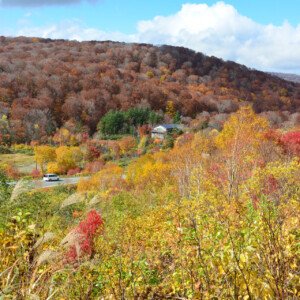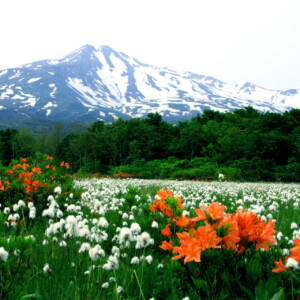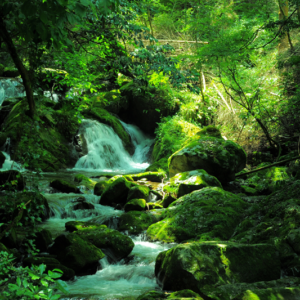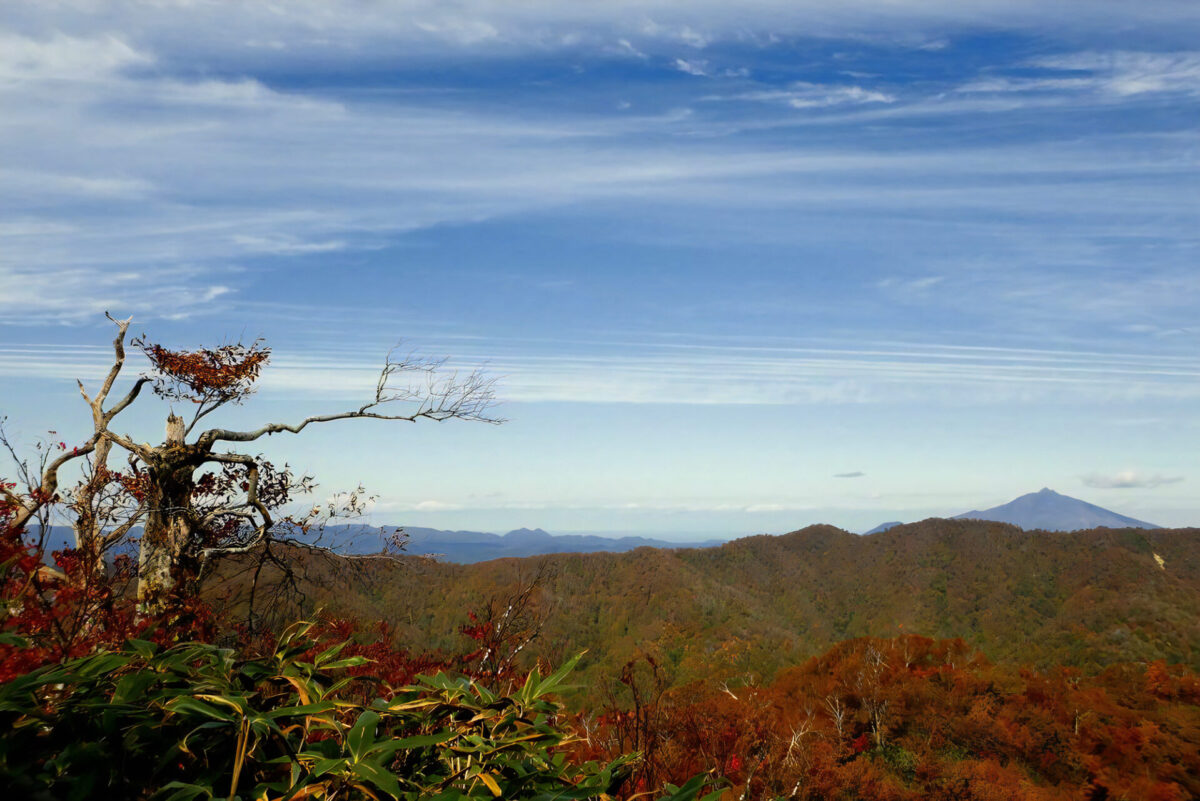
Why are there no virgin beech forests larger than the Shirakami-Sanchi in the world anymore? [Fujisato Town, Aomori Prefecture]
table of contents
- 1 The emergence and habitat of beech trees: Beech trees that took refuge in a small area in the south during the ice age
- 2 After the end of the ice age, global warming caused beech trees to move north. In Europe, humans drove out beech trees.
- 3 The remaining virgin forests in Europe were finally designated a World Heritage Site in 2007.
- 4 In North America, it grows only in the eastern part of the country. It has been largely lost due to European immigration and disease.
- 5 China's beech forests trapped in the Southern Highlands
- 6 Japanese beech trees, which had taken refuge in the south during the ice age, are now spreading to southern Hokkaido due to global warming.
- 7 In Japan, beech trees were used by people, and cedar trees were planted in their former locations.
- 8 Why has the virgin beech forest of Shirakami-Sanchi remained untouched?
- 9 The Seishu Forest Road project is at risk of development
- 10 The rise of the nature conservation movement and the bold decision of the Aomori Prefectural Governor that stopped the development of the Shirakami Mountains
- 11 Shirakami-Sanchi Charter
- 12 The Akita Prefecture entrance to the Shirakami-Sanchi Mountains, Shirakami-Sanchi World Heritage Center (Fujisatokan)
The Shirakami-Sanchi is a collective term for a vast mountainous region spanning approximately 130,000 hectares (1,300 square kilometers) across the towns of Ajigasawa, Fukaura, Nishimeya, Hirosaki, Fujisato, Happo, and Noshiro in Aomori Prefecture. The forests are primarily made up of conifers such as cedar and deciduous broad-leaved trees such as beech, oak, maple, and chestnut.
Of the vast Shirakami-Sanchi area, the area registered as a World Heritage Site covers approximately 16,971 hectares at high altitudes, straddling Aomori and Akita prefectures, and is made up of virgin forest, mostly consisting of beech trees. The Aomori side (Fukaura Town, Nishimeya Village) accounts for approximately 12,627 hectares, or 74% of the total. The Akita side accounts for approximately 4,344 hectares, all of which are located in Fujisato Town.
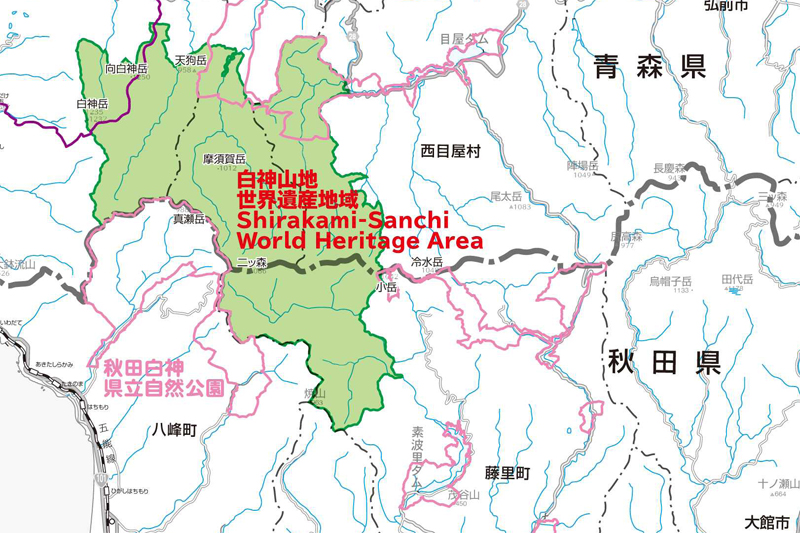
©Tohoku Forest Management Bureau
The Shirakami-Sanchi was registered as a World Heritage Site, albeit only partially, because it is home to "one of the world's largest distributions of virgin beech forests that have been virtually untouched by humans," making it a precious site that is found nowhere else in the world.
However, if you think about it, the 16,971 hectares of this designated World Natural Heritage Site is roughly the size of 3,600 Tokyo Domes, which is only about 1.5% of the area of Akita Prefecture. On a global scale, it's 0.0001% of the Earth's total land area. It's smaller than a speck of dust. How did such a tiny primeval beech forest become one of the largest in the world?
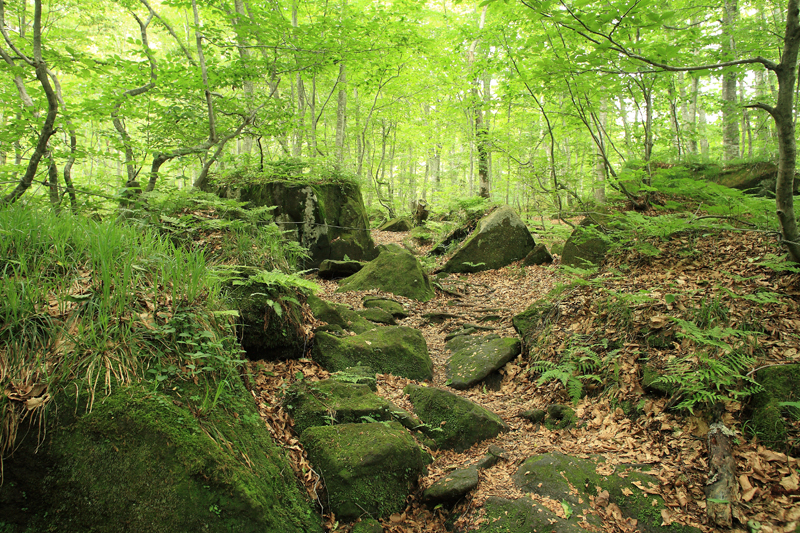
While cedars are native to Japan, beech trees are found throughout the Northern Hemisphere, in East Asia (including Japan), Europe, and North America. There are distant relatives in the Southern Hemisphere, but they are not the same as the beech trees found in the Northern Hemisphere, so here we will only consider the beech trees in the Northern Hemisphere that are in the same genus as the beech trees found in the Shirakami-Sanchi Mountains.
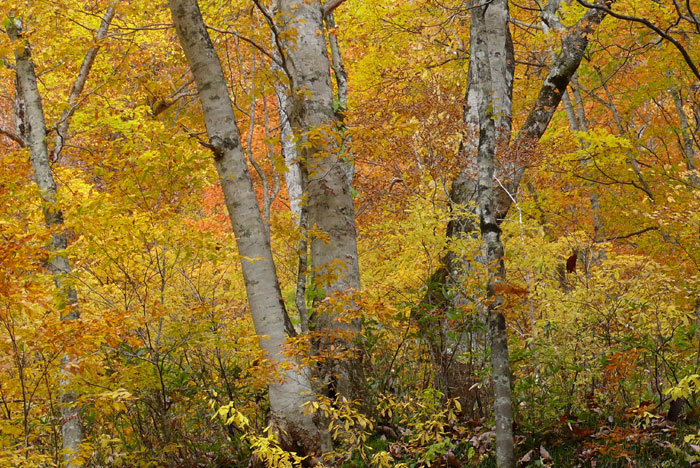
The emergence and habitat of beech trees: Beech trees that took refuge in a small area in the south during the ice age
Beech trees are thought to have originated about 60 million years ago, when many angiosperms (flowering trees) flourished on Earth. Their habitat was in the warm, moderately rainy regions of the Northern Hemisphere, namely Europe, North America, and East Asia, and they were unable to invade the arid regions of Central Asia.
During the subsequent ice ages that hit the Earth repeatedly, their habitat continued to shrink, and during the most recent ice age around 10,000 years ago, they managed to survive in the few warm areas known as refugia. In Europe, these areas included the Iberian Peninsula (Spain and Portugal), southern Italy, and the southern Balkan Peninsula (Greece, etc.), in North America the southern United States and Mexico, and in East Asia Japan and southern China.
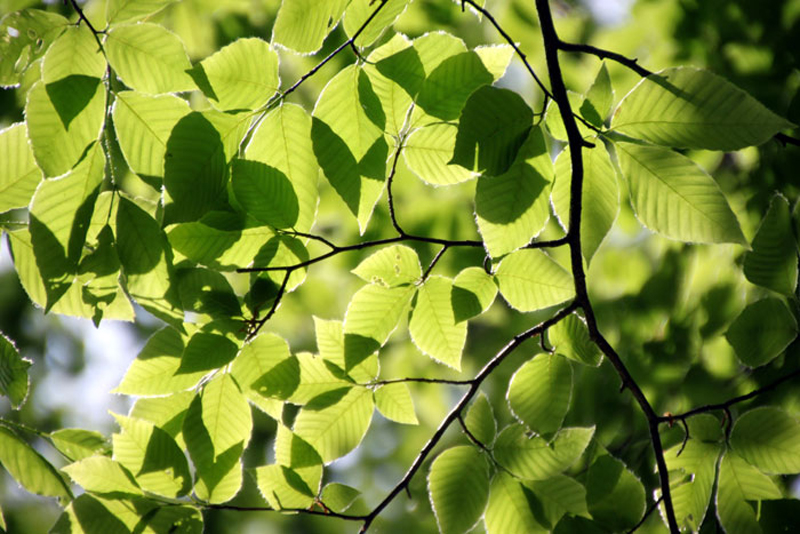
After the end of the ice age, global warming caused beech trees to move north. In Europe, humans drove out beech trees.
When the ice age ended and the climate returned to a warmer one, beech trees regained their strength and spread to areas of Europe below 1,000m above sea level, and to the temperate, humid regions of the east coast of North America. In East Asia, in Japan and southern China, climate conditions such as warming and drying in many areas prevented them from spreading much, but they did take root in the breeding areas they had evacuated.
Beech trees were widespread throughout Europe, but as human activity increased, their growth area began to decrease, as beech trees were essential to human life.
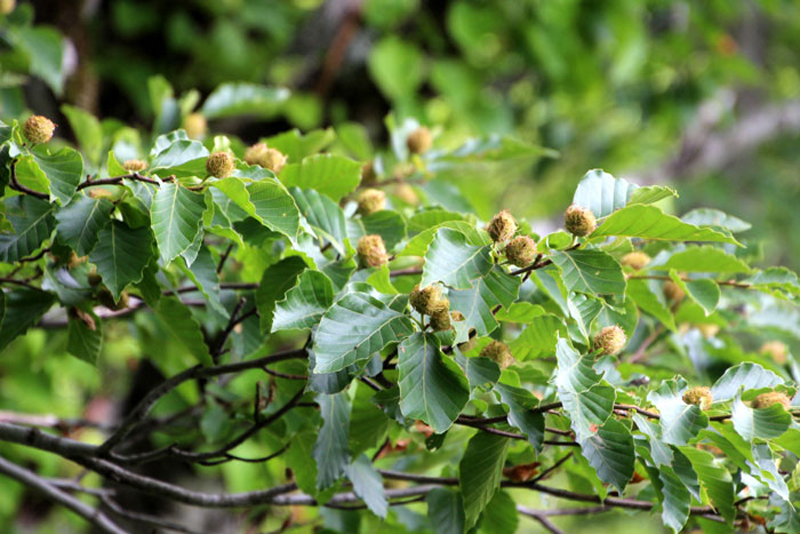
Bears and deer also love it. Summer beech trees with fruit growing ©Akita Forest Creation Activity Support Center
First of all, in order to secure houses and fields for people to live in, it was necessary to cut down beech forests to secure land. Beech is a tree that rots easily, so it was not suitable as a permanent material for houses, but it was ideal for furniture and other things because it was easy to craft. It was also good for fuel, so people consumed beech trees in large quantities.
Fields and pastures also required large spaces, and before we knew it, beech forests had drastically decreased in Europe. Then, the era entered the Industrial Revolution, and beech was consumed in huge quantities as fuel. After the beech trees were cut down, they were replaced by fast-growing evergreen coniferous trees such as fir, and today only small patches of virgin beech forest remain, scattered throughout the mountainous regions of European countries.
The remaining virgin forests in Europe were finally designated a World Heritage Site in 2007.
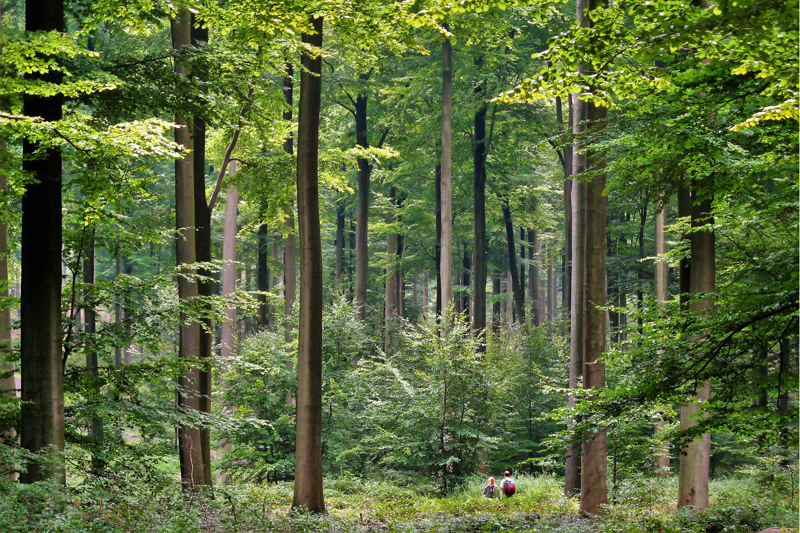
The dire state of European beech forests was left unattended for a long time, until finally, in 2007, Ukraine and Slovakia jointly applied to have the "Ancient and Primeval Beech Forests of the Carpathians and Other Regions of Europe" registered as a World Heritage Site. Since then, the number of registered World Heritage Sites has increased, and now spans a total of 18 countries, including Albania, Austria, Belgium, Bulgaria, Croatia, Germany, Italy, Romania, Slovakia, Slovenia, Spain, Ukraine, France, and Switzerland, with a total area of approximately 400,000 hectares. Since the entire European land area is approximately 1,018 million hectares, this represents only about 0.04%.
In North America, it grows only in the eastern part of the country. It has been largely lost due to European immigration and disease.
In North America, after the Ice Age, beech trees expanded their habitat by moving north from the southern United States, where they had sought refuge from the cold, along the Appalachian Mountains in the east, all the way to the Great Lakes region. However, with the full-scale immigration of Europeans to America from around the 17th century, beech forests were cut down one after another and replaced with residential areas and ranches. To make matters worse, a disease that caused tree death spread in the 1900s, and much of the virgin beech forest was lost.
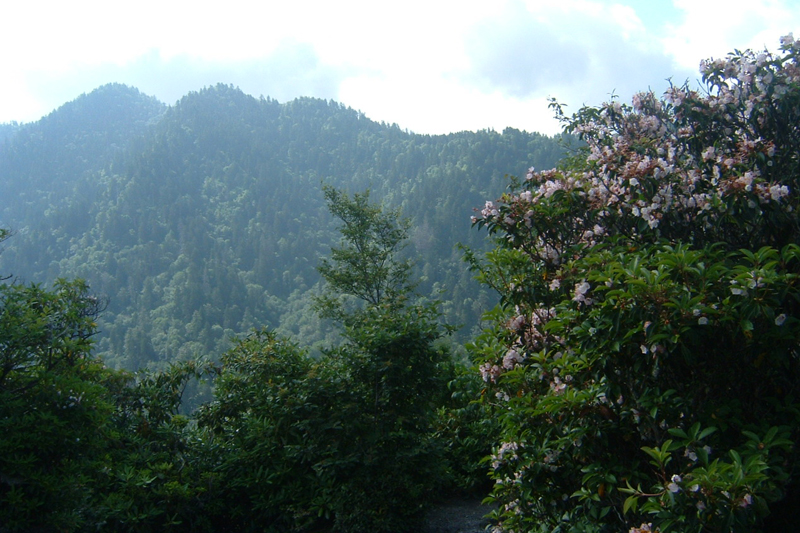
Famous beech forests in North America include the Joyce Kilmer Memorial Forest in southeastern North Carolina, where precious virgin forests including beech (Fagus sylvatica) remain, the Sleeping Bear Dunes National Lakeshore in northern Michigan, and the Great Smoky Mountains National Park spanning North Carolina and Tennessee. Great Smoky Mountains National Park in particular is one of North America's leading forest areas, home to approximately 100 species of trees including beech, more than 1,500 species of angiosperms, and tens of thousands of species of plants and animals, and is registered as a World Heritage Site.
China's beech forests trapped in the Southern Highlands
It is said that beech forests extended into the Arctic Circle before the ice age, but their habitat gradually shrunk southward during several ice ages. In East Asia, several species of beech, including Fagus crenata and Fagus japonica, have survived in southern China, Taiwan, and southern Japan.

About 10,000 years ago, as the ice age ended and the climate began to warm, temperatures in southern China became too high, creating a harsh environment for beech trees, which prefer a climate that is neither too cold nor too hot (cool temperate climate). As a result, their growing range was pushed to cooler highlands. In addition, the climate in the north became continental, preventing beech trees, which prefer a humid climate with little precipitation, from advancing northward.
Furthermore, southern China had an environment that was easy for people to live in, and tea plantations were established in the beech-growing areas. Beech was also consumed in large quantities for fuel and furniture, and eventually the virgin beech forests almost disappeared from southern China.
Japanese beech trees, which had taken refuge in the south during the ice age, are now spreading to southern Hokkaido due to global warming.
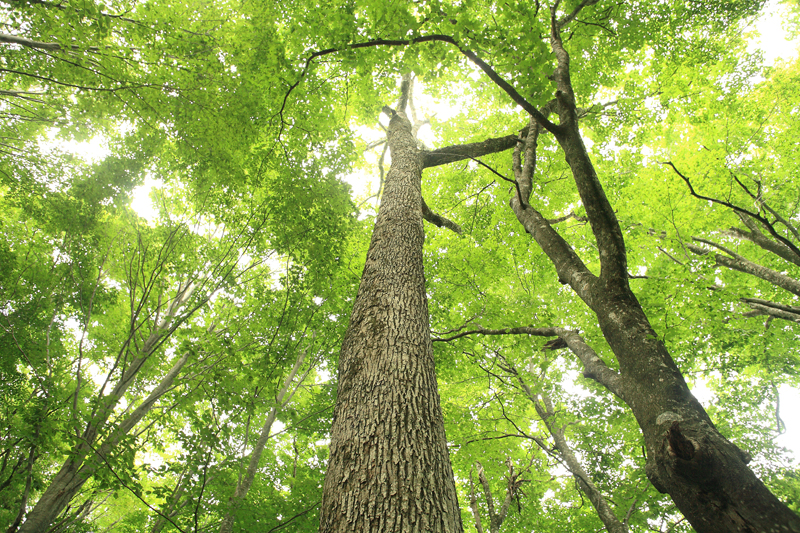
Meanwhile, Japanese beech trees took refuge in Taiwan and southern Japan during the Ice Age, and when it ended, as the Japanese archipelago warmed from south to north, their habitat expanded northward. It is said that 8,000 years ago beech trees spread south from southern Hokkaido. In northern Japan in particular, at altitudes of 200m to 1,200m, where the temperature was optimal for beech growth, deep forests were formed in which beech trees grew together with deciduous broadleaf trees such as chestnut, oak, and maple, and evergreen coniferous trees such as cedar.
In Japan, beech trees were used by people, and cedar trees were planted in their former locations.
Beech trees have been used by people all over the world and have been cut down as a nuisance for fields, pastures, factories, etc., resulting in the loss of many virgin forests, and in fact Japan has experienced the same thing. From the Edo period to the Meiji period, large amounts of cedar and cypress trees were cut down, but in the Showa period, large amounts of fuel were needed for war, and huge beech forests disappeared.
During the period of high economic growth from the late 1950s to the 1970s, fuel sources were replaced by fossil fuels, and beech trees were used to make plywood and paper. Furthermore, after the beech trees were cut down, cedar trees, which grow quickly and are used as building materials, were planted as a national policy. This was known as "beech subjugation," and the beech trees were actively cut down and replaced with cedar trees. As a result, even in Japan, virgin beech forests have almost entirely been replaced by cedar forests, with the exception of some areas such as in the high mountains.
Deciduous broad-leaved trees such as beech were known to have high water retention capabilities, but they could not resist human greed. People who saw future demand for them cut down deciduous broad-leaved trees across the country and continued to plant cedar trees, knowing that they had poor water retention. Meanwhile, the age of reinforced concrete arrived. Inevitably, demand for timber plummeted, and cedar forests were left abandoned. Mountain slopes were filled with artificial cedar forests with poor water retention capabilities, and disasters such as landslides caused by even a little rain became frequent.
Why has the virgin beech forest of Shirakami-Sanchi remained untouched?
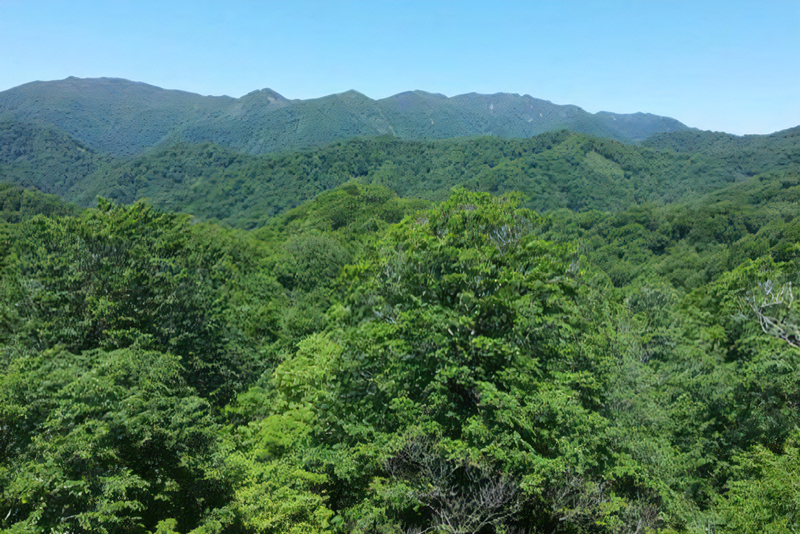
The highest mountain in the Shirakami Mountains is about 1,250m above sea level (Mukai Shirakami-dake, Fukaura Town, Aomori Prefecture), but the surrounding area is a continuous chain of mountains over 1,000m high, forming a steep mountainous region. Logging beech trees in Shirakami requires a lot of money for transportation, making it not cost-effective and not worth it. Also, the foot of the mountain on the Akita side is home to cedar forests, which are considered the most useful, so there has been little development there.
The Seishu Forest Road project is at risk of development
Development is also reaching out to the Shirakami Mountains.
In 1978 (Showa 53), the "Seishu Prefectural Border Inner Region Development Forest Road Plan" (Seishu Forest Road) for the development of the Shirakami-Sanchi was created, led by Diet members representing Akita and Aomori prefectures and the mayors of the relevant towns and villages at the time. It was approved by the Forestry Agency in 1982 (Showa 57), and construction of a portion of the forest road on the Akita side began immediately. The Seishu Forest Road was planned to run from Hachimori Town (now Happo Town) on the Sea of Japan side of Akita Prefecture, through the middle of the Shirakami-Sanchi, and out to Nishimeya Village in Aomori Prefecture. Nominally, it was intended as a useful road connecting Hirosaki City in Aomori Prefecture with the Sea of Japan side of Akita Prefecture, but it's also said that its real purpose was to develop the Shirakami-Sanchi.
The rise of the nature conservation movement and the bold decision of the Aomori Prefectural Governor that stopped the development of the Shirakami Mountains
This story reached the ears of Koichi Kamata (1930-2021, age 28 at the time), a resident of Fujisato Town who had founded the "Akita Nature Protection Friendship Association" in 1973 (Showa 48) and had been working to protect the beech forests of the Shirakami-Sanchi Mountains, and he began a campaign against the plan. This campaign led to the Shirakami-Sanchi being registered as a World Natural Heritage Site.
Meanwhile, opposition movements began on the Aomori side as well. Construction on the Aomori side of the Seishu Forest Road began a little later than on the Akita side. As the nature conservation movement gained momentum, opposition movements also gained momentum, but construction began and politicians did not back down. As the issue became a political issue, Kitamura Masaya (1916-2004), who was the governor of Aomori Prefecture at the time, decided to halt construction of the Seishu Forest Road, and the Shirakami-Sanchi was protected. This was in December 1987 (Showa 62). In 1994 (Heisei 6), Governor Kitamura also decided to permanently preserve the Sannai-Maruyama Ruins.
What started as a wave of 13 people grew into a huge swell, and the Shirakami-Sanchi Mountains were registered as a World Heritage Site in December 1993 (Heisei 5).
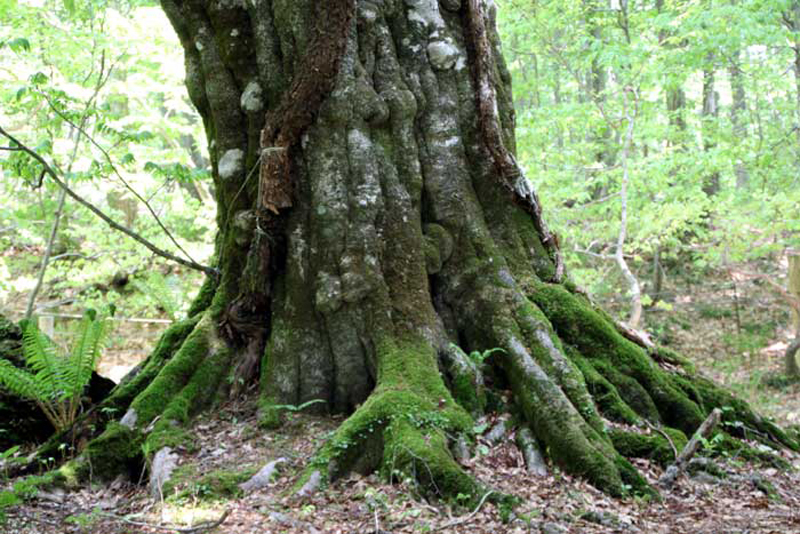
Shirakami-Sanchi Charter
"Rainfall in the natural beech forest travels down the branches, leaves, and roots, is absorbed by the earth, and seeps into the streams, nurturing a wide variety of plants and animals, before reaching the ocean and providing abundant blessings. The seawater turns into steam and clouds, and returns to the mountains, completing the great cycle of life.
"The Shirakami-Sanchi is a treasure on Earth, and it is the responsibility of humanity to protect it and pass it on to future generations. Now, as we enter the 21st century, we in Aomori and Akita prefectures have come together as one and have adopted a charter of principles to protect this World Heritage Site."
October 7, 2001, Aomori Prefecture and Akita Prefecture (original text)
The Akita Prefecture entrance to the Shirakami-Sanchi Mountains, Shirakami-Sanchi World Heritage Center (Fujisatokan)
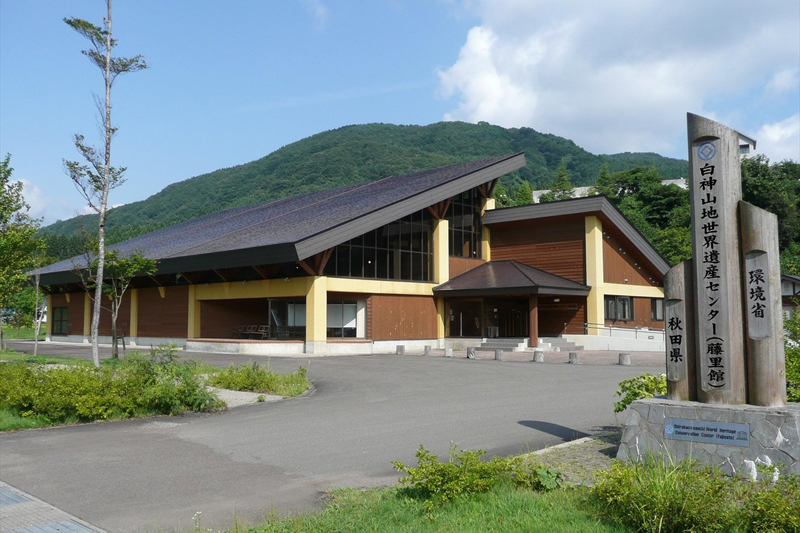
The Shirakami-Sanchi World Heritage Center (Fujisatokan) is an exhibition facility located in Fujisato Town at the southern foot of the Shirakami-Sanchi Mountains that is a must-visit for anyone wanting to learn more about the area. Inside the center, there is an area that displays and introduces information about the flora and fauna that inhabit the area, as well as a large collection of books and a DVD viewing space.
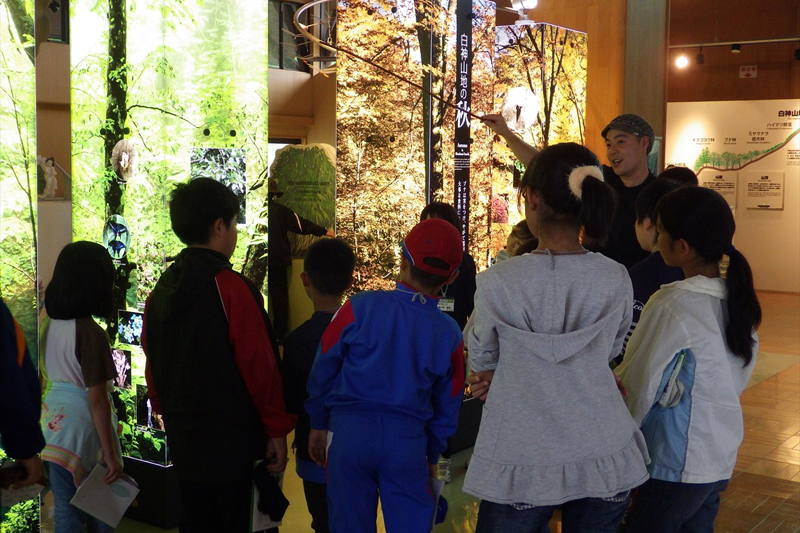
There is a nature advisor on-site who is knowledgeable about the Shirakami-Sanchi Mountains, and will provide easy-to-understand explanations about the area even for first-time visitors.
Shirakami-Sanchi World Heritage Center (Fujisato Hall)
- Facility name: Shirakami-Sanchi World Heritage Center (Fujisatokan)
- Address: 63 Fujikotori, Fujisato-cho, Yamamoto-gun, Akita Prefecture
- Phone number: 0185-79-3005
- Opening hours:
- March to November: 9:00 to 17:00
- December to February 10:00 to 16:00
- closing day:
- March to November / Tuesdays (or the following day if Tuesday is a public holiday)
- December to February: Mondays and Tuesdays (Tuesdays and Wednesdays if Monday falls on a public holiday), New Year's holiday
- Admission fee: Free
- URL: Shirakami-Sanchi World Heritage Center (Fujisato Hall)
- access:
- Public transportation: Take a taxi from Futatsui Station on the JR Ou Main Line for approximately 20 minutes, or take a local bus bound for Manako for approximately 20 minutes and get off at the Yunosawa Onsen bus stop (not available on weekends, holidays, or during the New Year holidays)
- By car: Approximately 30 minutes from Futatsui Shirakami IC on the Akita Expressway
Google Map
The core area (Akita Prefecture side) of the Shirakami-Sanchi World Heritage Site is off-limits, but there are some spectacular spots in the buffer zone and surrounding areas where you can get a real feel for the World Heritage Site. We will introduce these in a separate article.


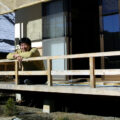
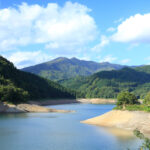
![[Aomori Prefecture] There are two world heritage sites in Tohoku! What is the appeal of Japan's first World Heritage Site, Shirakami-Sanchi? 4838987_m](https://jp.neft.asia/wp-content/uploads/2021/12/4838987_m-150x150.jpg)



![[Aomori Prefecture] How cold is it in Aomori? Introducing cold weather measures for your winter trip to Aomori! 25097708_m](https://jp.neft.asia/wp-content/uploads/2023/02/25097708_m-150x150.jpg)

![Akita Cedar, which has been close to people's lives since ancient times, is a close look at the reasons and secrets [Akita Prefecture] Ninfu Mizusawa Cedar Rare Population Protection Forest (Noshiro City, Akita Prefecture)_Travel Tohoku](https://jp.neft.asia/wp-content/uploads/2025/05/792bcbe7d9fd514753f4deeaca3de33f-150x150.jpg)







